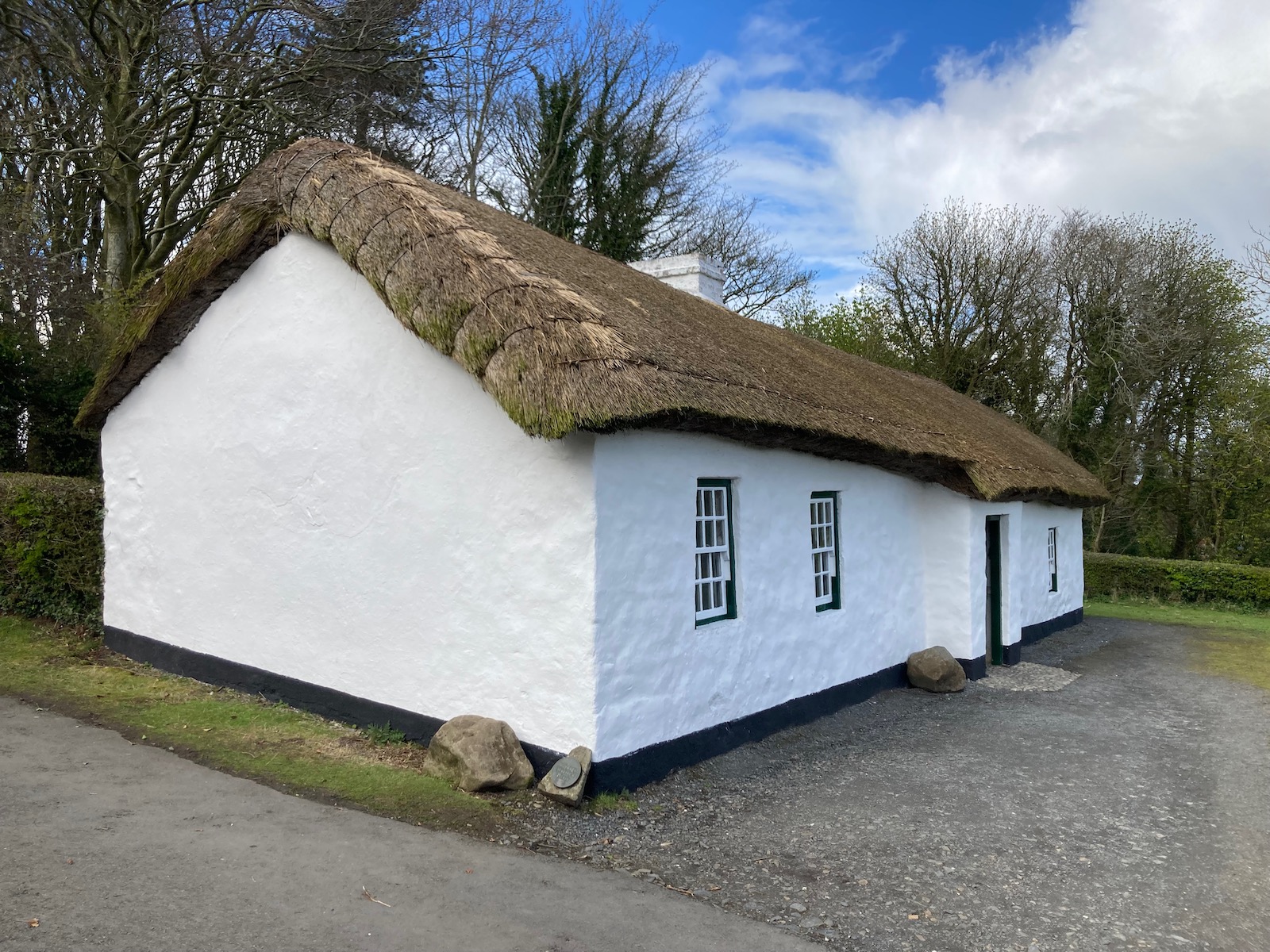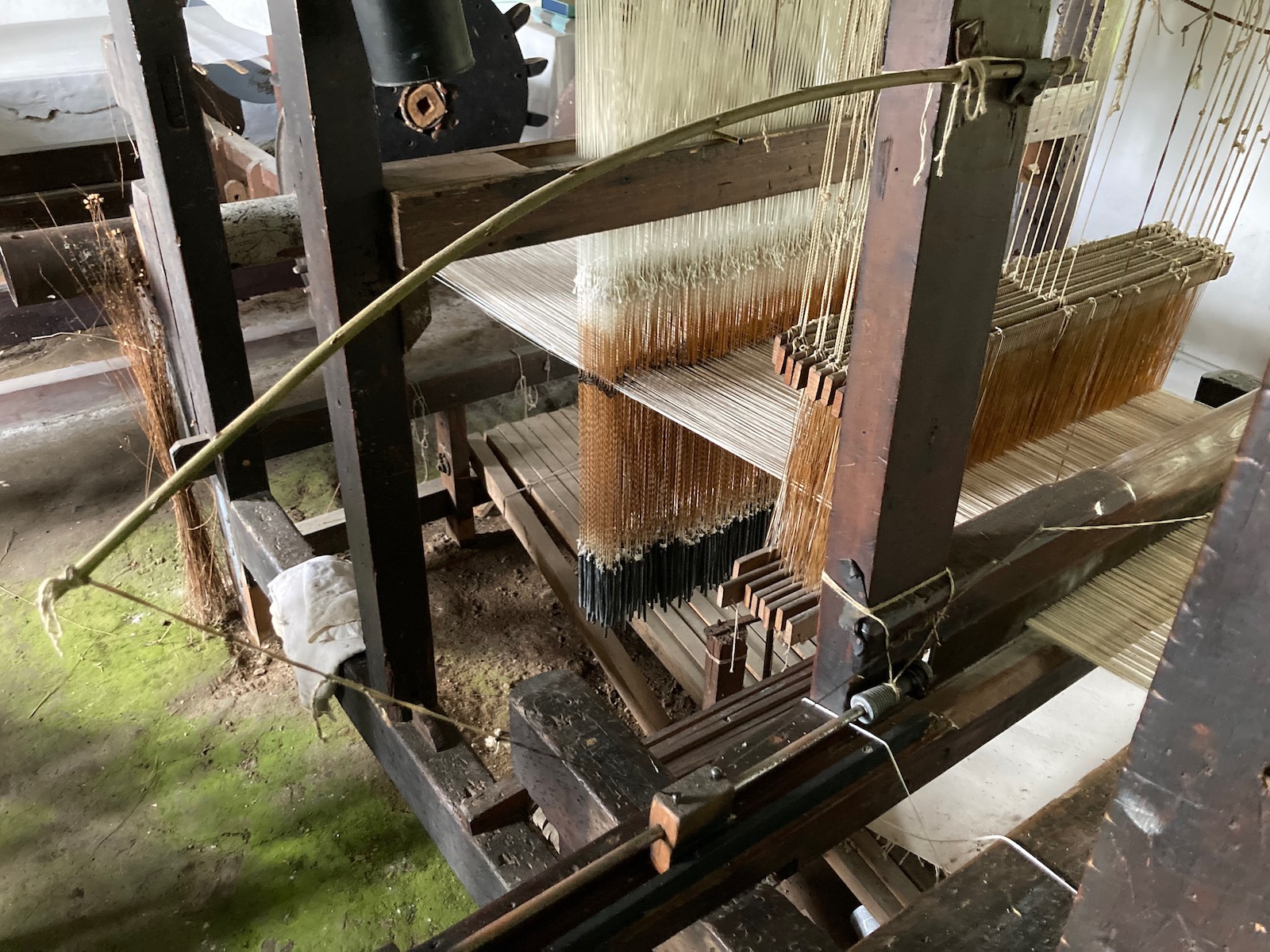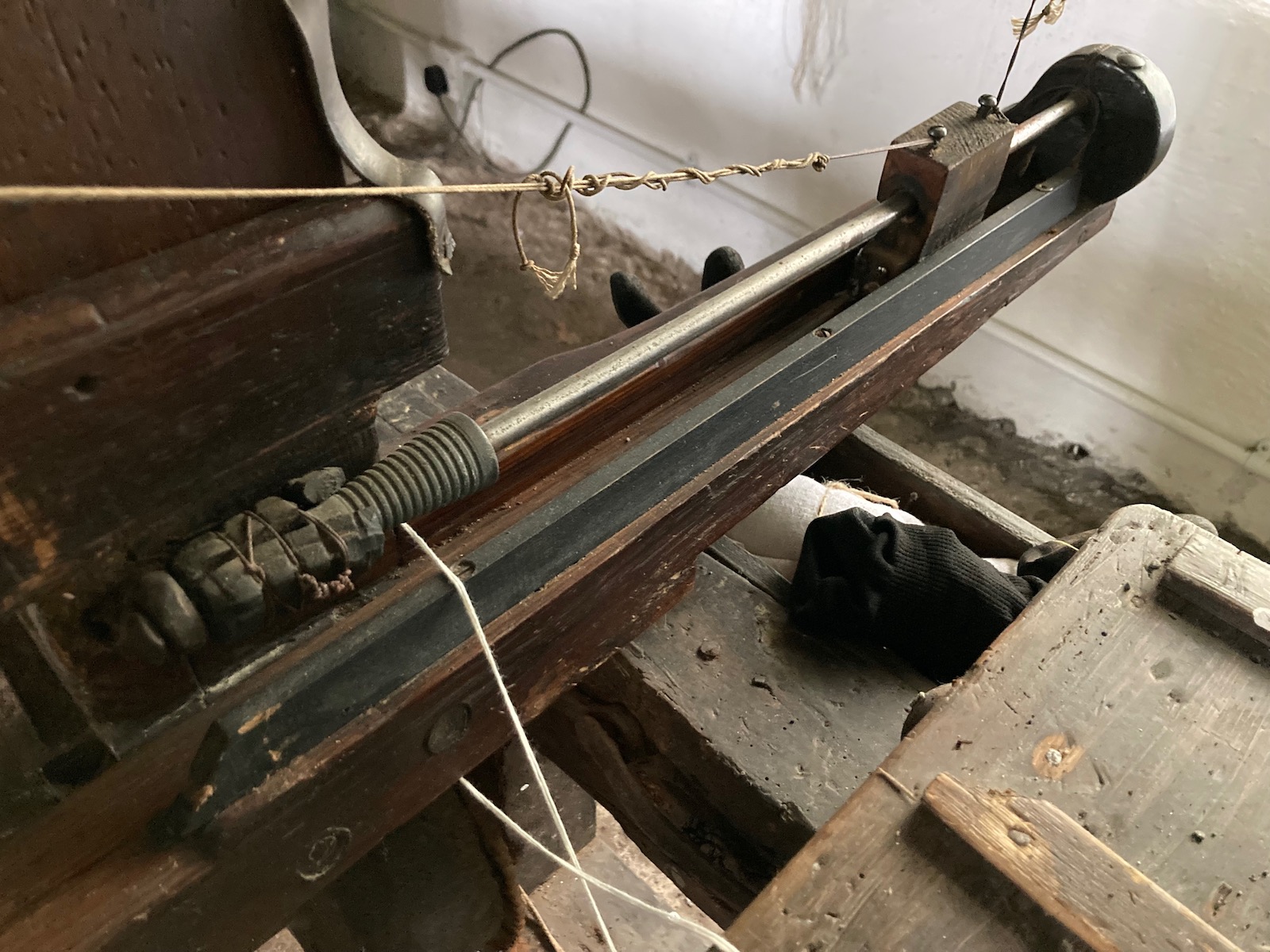The second of two posts presenting photographs of the linen looms at Ballydugan Weaver’s House in the Ulster Folk & Transport Museum, Northern Ireland.
This post deals with the ‘damask loom’, the previous post with the ‘plain loom’.
.

Ballydugan Weaver’s House is a reconstruction of an 1850s weaver’s cottage from Ballydugan, County Down. It currently houses two working linen looms, both dating from around 1900. The two looms are similar in size and construction. Both have previously been fitted with Jacquard mechanisms, but one is currently set up for plain weaving with the Jacquard harness removed. The other is set up for damask weaving. In these posts I refer to them as the Plain Loom (see previous post) and the Damask Loom.
I visited in April 2023 to look at details of loom construction to inform my own loom build later in the year. I am grateful to the weavers Roisin & Joanne for welcoming me.
The Damask Loom
The frame of the Damask loom is narrower than the Plain loom but of similar form, with the addition of extra uprights and rails to support the Jacquard mechanism, punch cards and harness. It is fitted with a flanged warp beam with a large wooden brake wheel with only twelve teeth (the plain loom has a wheel with sixteen teeth). The pawl lever has an additional step at the end to allow the brake to be held midway between two teeth. The fly-shuttle arrangement is very similar to that described on the plain loom. The Jacquard harness works in tandem with the front eight-shaft harness to weave damask.

The ‘Damask’ loom, general view.

The ‘Damask’ loom, general view.

Ratchet wheel & pawl (left); turnscrew for adjusting warp beam height (right).

SIde view showing front harness & fly-shuttle box.

Fly-shuttle box.


Fly-shuttle picker made from apple-wood.

Fly-shuttle picking stick.

Front harness.

Jacquard mechanism on top of loom.

Jacquard punch cards.
